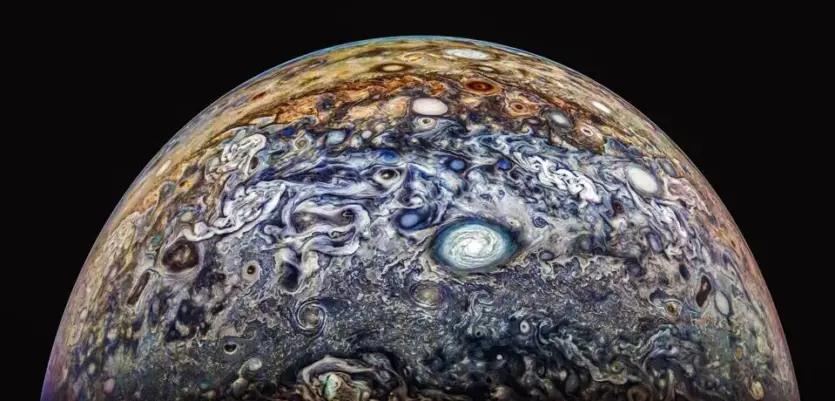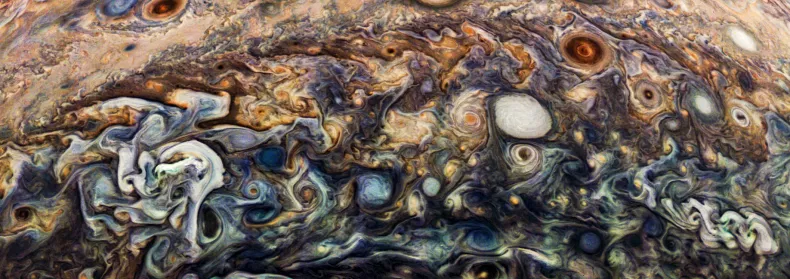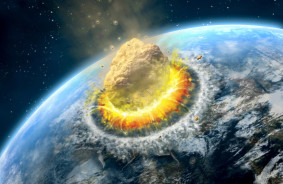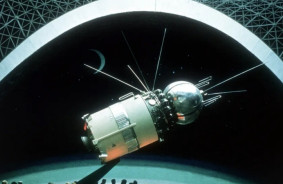The NASA interplanetary probe "Juno" has sent a new series of images of Jupiter, taken during its latest (the 66th) flyby of the largest planet in the Solar System.
The spacecraft, which cost $1 billion, was launched in 2011 and reached Jupiter's orbit five years later, traveling a distance of 2.8 billion kilometers. Since then, the probe has been orbiting the planet, gathering important data and sending stunning images back to Earth. During its most recent flyby, which concluded on October 23, 2023, "Juno" also approached Jupiter's fifth-largest moon, Amalthea (which is significantly smaller than Earth's moon, has a radius of 84 km, an irregular "potato-like" shape, and orbits closer to Jupiter than Io).


"Juno" is equipped with a two-megapixel visible light camera, "JunoCam," as well as a magnetometer for mapping Jupiter's magnetic field and a microwave radiometer for measuring water and ammonia content in the planet's atmosphere.
Among the most significant "hits" captured by the equipment are the first close-up images of Jupiter's north pole. These images revealed to researchers that this unknown region contains a central cyclone surrounded by eight other cyclones (each around 4,000 km in diameter).
Notably, there is no dedicated team of scientists for image processing for the mission. This task is handled by public researchers who upload the images to a specialized website.
"Juno" has also provided information about the most famous anticyclone on Jupiter, known as the "Great Red Spot" — which, it turns out, is shrinking (the spot was twice the size of Earth in 1979, but now exceeds Earth's size by only 1.3 times). Additionally, the interplanetary probe has discovered that the storm reaches depths that are 50-100 times greater than the depths of Earth's oceans.
The probe has conducted extremely valuable work, but its journey will soon come to an end. Initially, it was planned for "Juno" to complete 33 orbits by 2017, but the mission has been extended to September 2025 — at which point Jupiter's gravity will "pull it in," burying the spacecraft in its chaotic atmosphere.
At the same time, "Juno" has two successors: the European Space Agency's JUICE spacecraft, which will reach the planet's system in 2031 (with a planned 21 orbits around Jupiter's moon Callisto), and NASA's Europa Clipper, which was launched in early October and will arrive at Jupiter in 2030 to focus on Europa.














Comments (0)
There are no comments for now